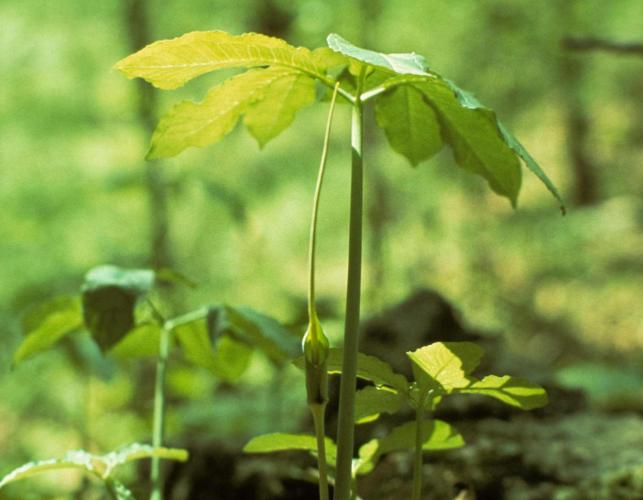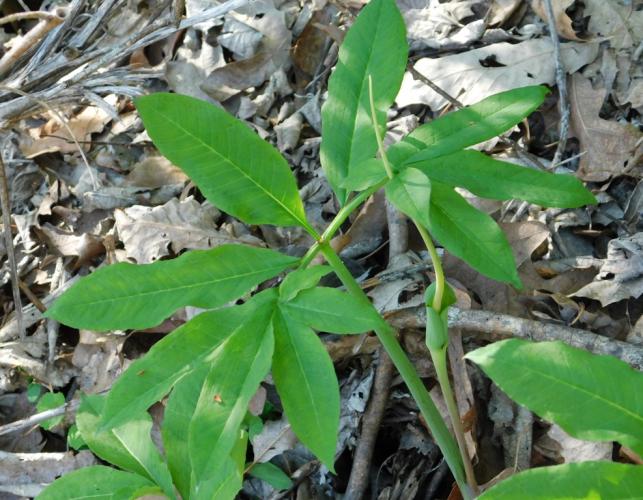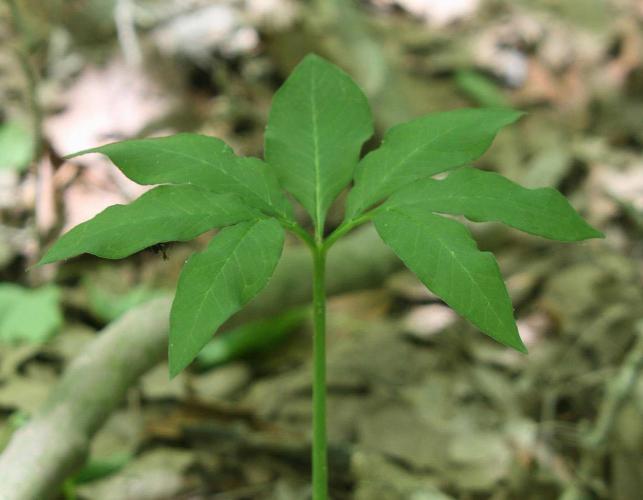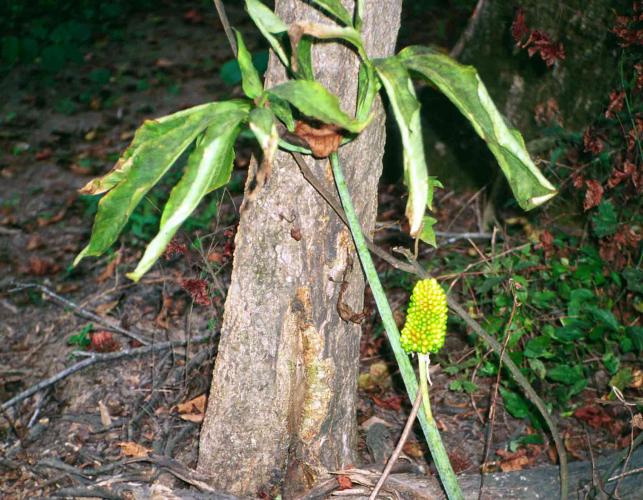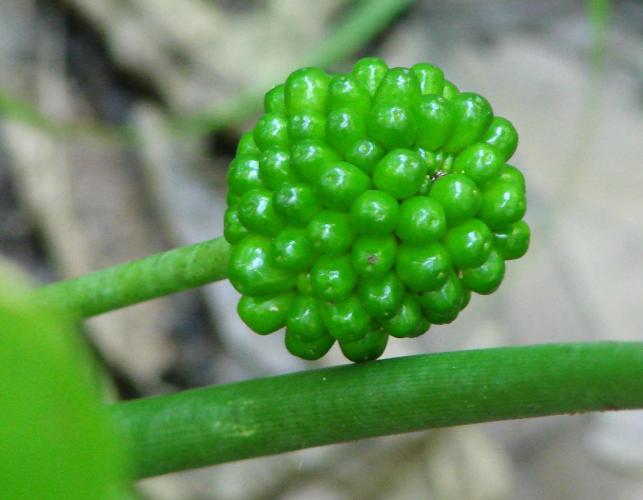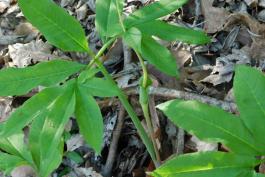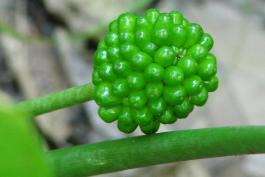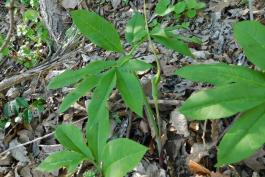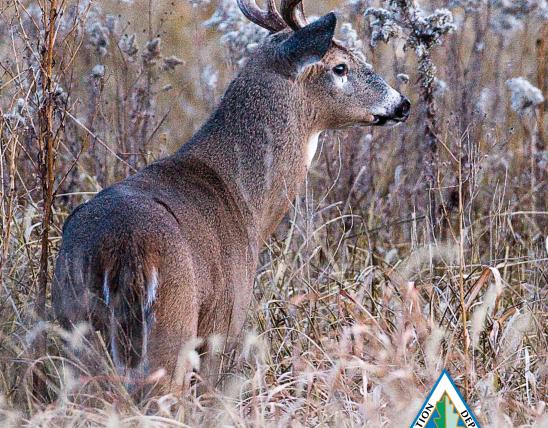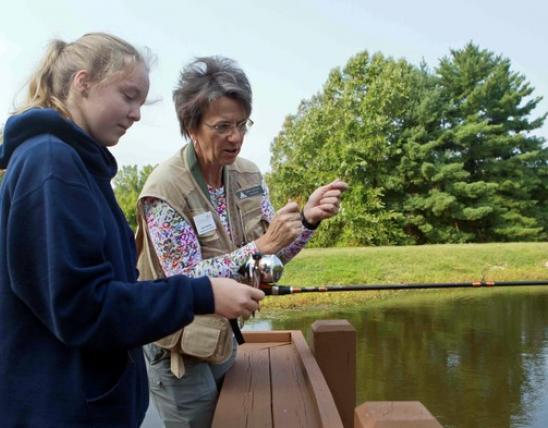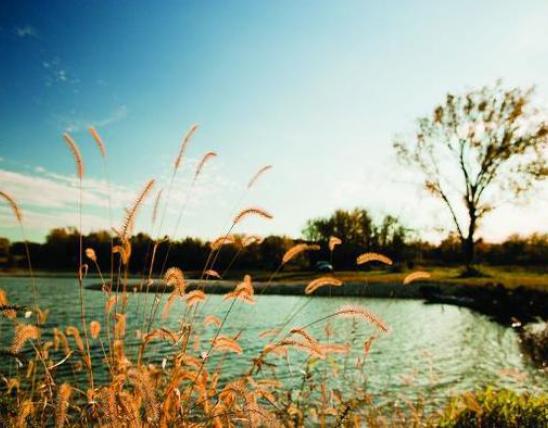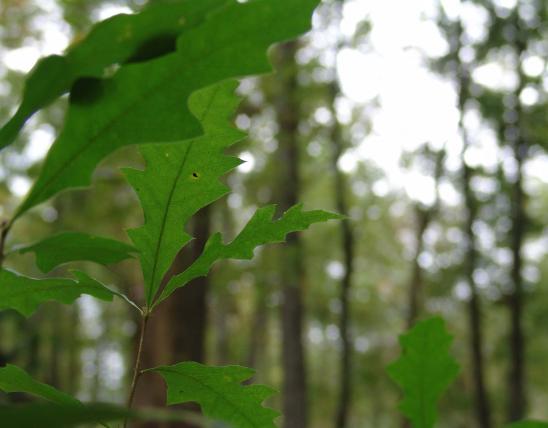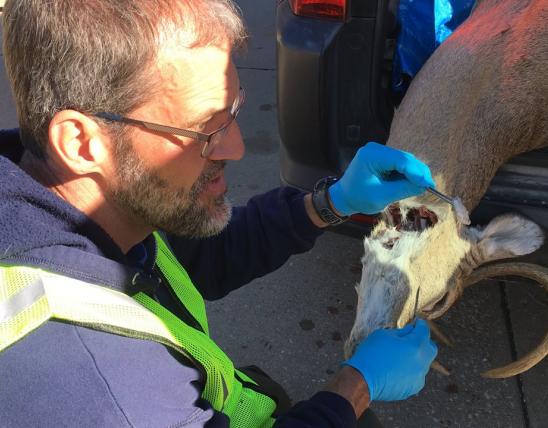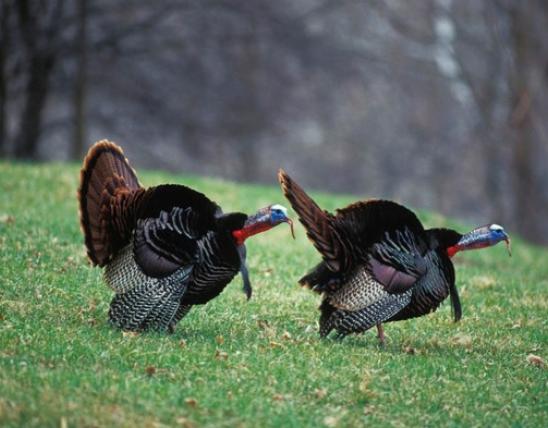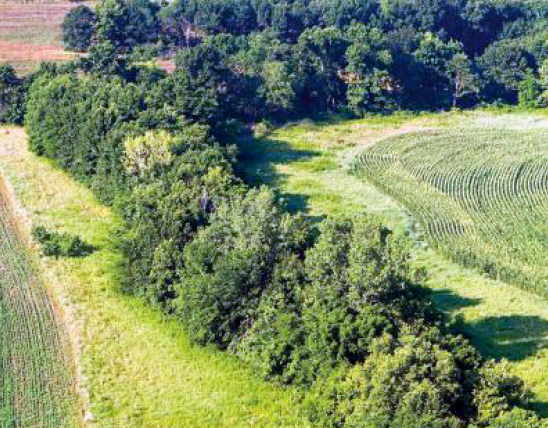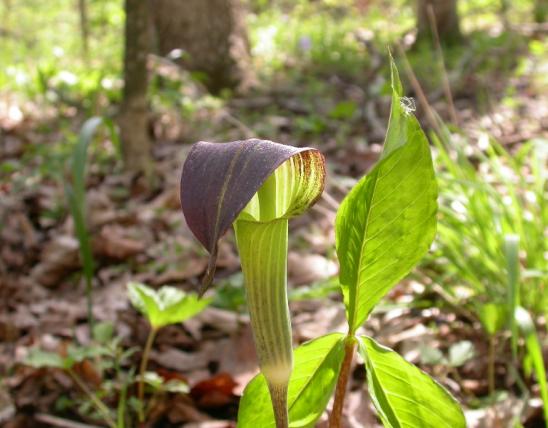
Green dragon is a nonwoody perennial wildflower that blooms in spring. The flowers are many and tiny, light green, on the lower part of a long, narrow, taillike spadix (a spikelike structure holding many tiny flowers). A tightly wrapping, green, leaflike spathe (modified bract) shelters the flowers. Blooms April–June.
There is only one leaf, which is divided into 5–15 lance-shaped sections. The fruits are clustered berries that turn from shiny green to brilliant scarlet. The rootstock us a flattened, round corm, often large.
Similar species: Jack-in-the-pulpit (A. triphyllum) has leaves with no more than 3 leaflets (instead of 5–15), and its spathe has white and brown lengthwise markings and a rather blunt tip. The fruits of the two species are indistinguishable.
Height: occasionally to 3 feet.
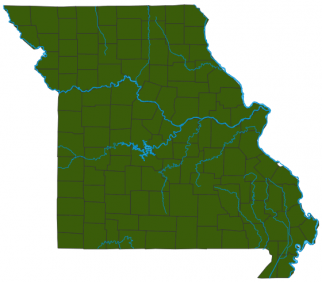
Scattered statewide.
Habitat and Conservation
Occurs in rich, moist woods, often in floodplains.
When you see a green dragon in the wild, leave it alone, since this species is somewhat uncommon.
If you want a green dragon for your moist shade garden, don’t dig any up. Return in fall to collect a few seeds, or seek plants from reputable native plant nurseries.
Status
Native Missouri perennial wildflower.
Human Connections
Native Americans dried and ground the rootstocks for flour. Uncooked and improperly prepared, this plant is toxic, as it contains calcium oxalate. That’s the same chemical found in its houseplant relative dieffenbachia (dumb cane), which on contact causes mouth irritation, burning, and swelling, and gastrointestinal upset.
Ecosystem Connections
The arum family is large, and most of its members are tropical. You probably know elephant ear, calla and peace lilies, and philodendron. They all have the same kind of floral structures. There are only four aroids in Missouri’s flora, and one is an introduced exotic.


